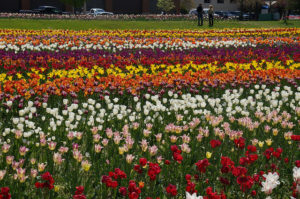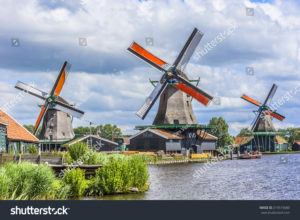
Holland — er, the Netherlands — is known for its tulips, among other delights. Photo by Rachel Kramer on flickr
As of January 1, 2020, “Holland” — the storied land of wooden shoes, windmills, bicycles, and tulips — is no more.
Did it finally succumb to flooding, with little Dutch children no longer able to stick their fingers in the dykes to hold back the rushing waters?
No, the country isn’t disappearing, just its commonly used monniker.
It seems that the name “Holland” has fallen victim to a government rebranding effort designed to ease overtourism in Amsterdam and its nearby tourist magnets such as The Hague, Delft, and Haarlem, all part of historical Holland.
The official name of the country — the Netherlands — encompasses more than historical Holland, and the Dutch government is spending €200,000 on the rebranding so that tourists will expand their horizons and visit its nether regions, so to speak.
The Dutch — they’ll still be called the Dutch, as far as I know — are reportedly fed up with “Holland’s” (particularly Amsterdam’s) reputation for dope-smoking and red-light district slumming, and may figure “the Netherlands” sounds more respectable.
Maybe, they think, some of the more unwashed tourists will be fooled into detouring to neighboring Belgium instead, where the beer, chocolate, and French fries (as we call them in the States) may be even better. (Be sure to have your fries with mayonnaise!)
Dutch vs. Belgian food and drink is a worthy topic of debate — both countries serve up some of the world’s best — but I digress.
The jolting part of this story is that Dutch travel marketing slogans and materials will no longer rely on “Holland” to sell their country, and that may be hard for some of us baby boomers to swallow. Who can forget Hans Brinker, or the Silver Skates: A Story of Life in Holland? I may even have my dog-eared childhood copy in storage somewhere.
Even the orange tulip logo is getting clipped, in favor of some new stylized tulip. Will that really keep folks away from prowling and gawking their way through the red light district?
Overrun by Tourists
I do fully understand the perils of overtourism.
Like Venice, Dubrovnik, Barcelona, and some other beautiful European cities, Amsterdam — the so-called “Venice of the North” known for its charming canals — is swimming in visitors, if you’ll pardon the analogy.

Traditional Dutch windmills.
Photo from Shutterstock
Last year, the Dutch tourism poohbahs even announced they would stop promoting tourism to Amsterdam and surroundings, which is like the U.S. Department of Agriculture coming out against soybeans.
But despite their best efforts, or lack of same, Netherlands tourism is still expected to increase by ten million travelers in the next decade, up from 19 to 29 million. That’s a lot of folks jammed into a country the size of the U.S. state of Maryland (for non-U.S. readers, think: “small”) — and several million more than its own population. Amsterdam alone receives 17 million visitors per year.
“To control visitor flow and leverage the opportunities that tourism brings with it, we must act now,” proclaimed the Dutch tourism board in announcing the changes. “Instead of destination promotion, it is now time for destination management.”
Which means, in a practical manner, goodbye Amsterdam, hello undertouristed spots such as Groningen, Zeeland, and Maastricht. (Not a completely bad thing — Maastricht is a delightful town, for instance, and you can go mud walking in Zeeland), though I do hope the tourism folks won’t totally write off Amsterdam’s key sites such as the Rijksmuseum, Anne Frank’s House, and canal-boat tours.
There is one possibly encouraging development: as of this writing (January 2, 2020), the website holland.com (“Your Official Guide for Visiting the Netherlands”) is still up and running, complete with orange tulip logo.
Maybe the Dutch website designers have just been taking a long holiday. Or maybe no one will notice. I’m kind of rooting for that — after all, what other country has been known by three such completely different names?












Leave a Reply